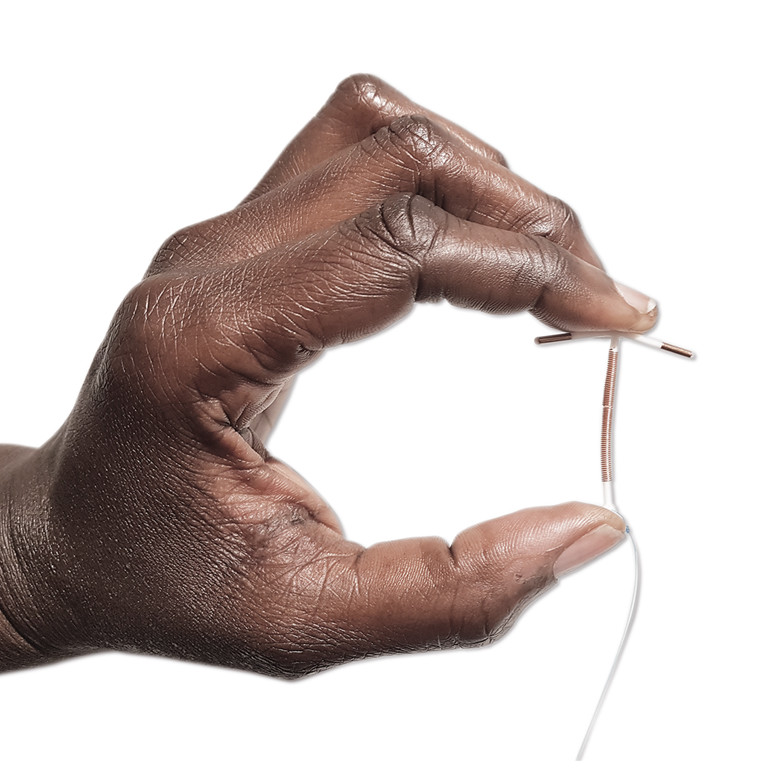
The copper coil (or IUD) is made of plastic and copper.
It's put into the womb by a doctor or nurse, and lasts up to 5 to 10 years.
The IUD is popular because it has no hormones.
Positives
- It doesn’t interrupt sex
- It doesn't contain hormones
- No need to remember pills or patches
- Lasts up to 5 to 10 years
- It's usually quick and easy to take out
- It’s extremely good at preventing pregnancy
- Can be used at any age
Negatives
- Periods may be heavier and more painful than with hormonal methods
- Having it fitted can be painful
- The IUD can come out (1 in 20 users)
- STI check needed before putting it in
- No protection against STIs
Rare risks
- IUD through the wall of the womb when it's put in (fewer than 2 in 1000)
- Pregnancy outside the womb (ectopic pregnancy) - possible but rare
The IUD is great if pills are a nuisance to remember
It lasts up to 10 years, and is not affected by other medicines, vomiting or diarrhoea
The IUD does not cause infertility
Fertility returns to normal after having the IUD taken out. It’s important to know that it’s less easy to get pregnant with age – it’s naturally harder to get pregnant over the age of 35
You can't feel the IUD during sex
Some partners do notice the threads during sex, but the threads can be trimmed so they are out of the way
The IUD is very discrete
The pattern of periods is not affected by the IUD.
If periods are heavy or painful, this can be treated by medication from a GP
The IUD can come out especially after periods in the first three months (1 in 20 chance)
It's a good idea to check the threads (feeling for them inside the vagina after every period)
Good to know
The IUD has no hormones and is very reliable.
The IUD can be painful to put in, but pain relief like gas and air can help.
The IUD lasts for up to 5 to 10 years (depending on the type).
The IUD is usually easy to remove.
How much effort is the IUD?
The IUD is put in by a doctor or nurse at a GP surgery, sexual health clinic or family planning clinic. It takes about 15 to 20 minutes to put in.
The fitting can be painful, and it’s common to have some pain and bleeding for a few days after. Find out more about where to get an IUD here
It's important to make sure a that there is no possibility of pregnancy before it's put in. Clinics will advise about this.
How effective is the IUD?
The IUD is more than 99% effective – if 100 people use the IUD for a year, less than one will have an unplanned pregnancy.
How does it work?
The IUD is made of plastic and copper. The copper stops the sperm and egg from surviving inside the womb and fallopian tubes, so sperm cannot fertilise an egg. Find out more about how the body works here.
When the IUD is removed, you can get pregnant with no delay.
The IUD itself can't be felt by the user or partners because it lies right inside the womb. Two soft threads sit high up inside the vagina, partners can occasionally feel the threads but not the IUD itself.
Periods may be heavier and more painful than with hormonal methods. This can be treated by medication from a GP.
